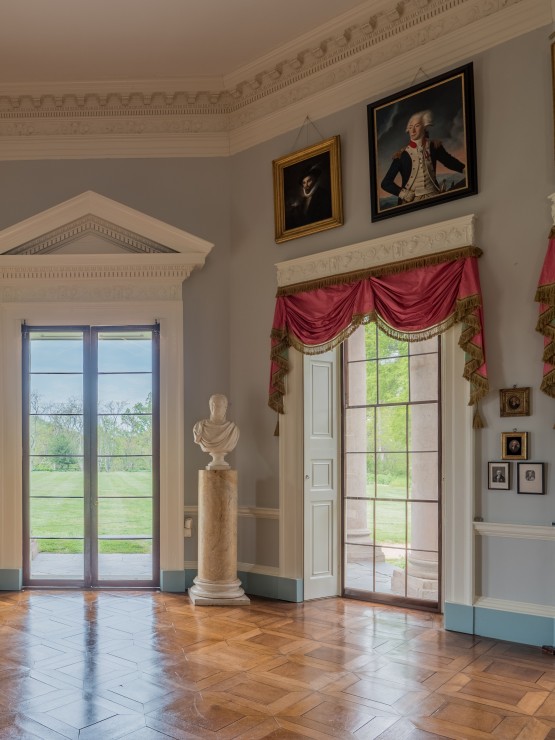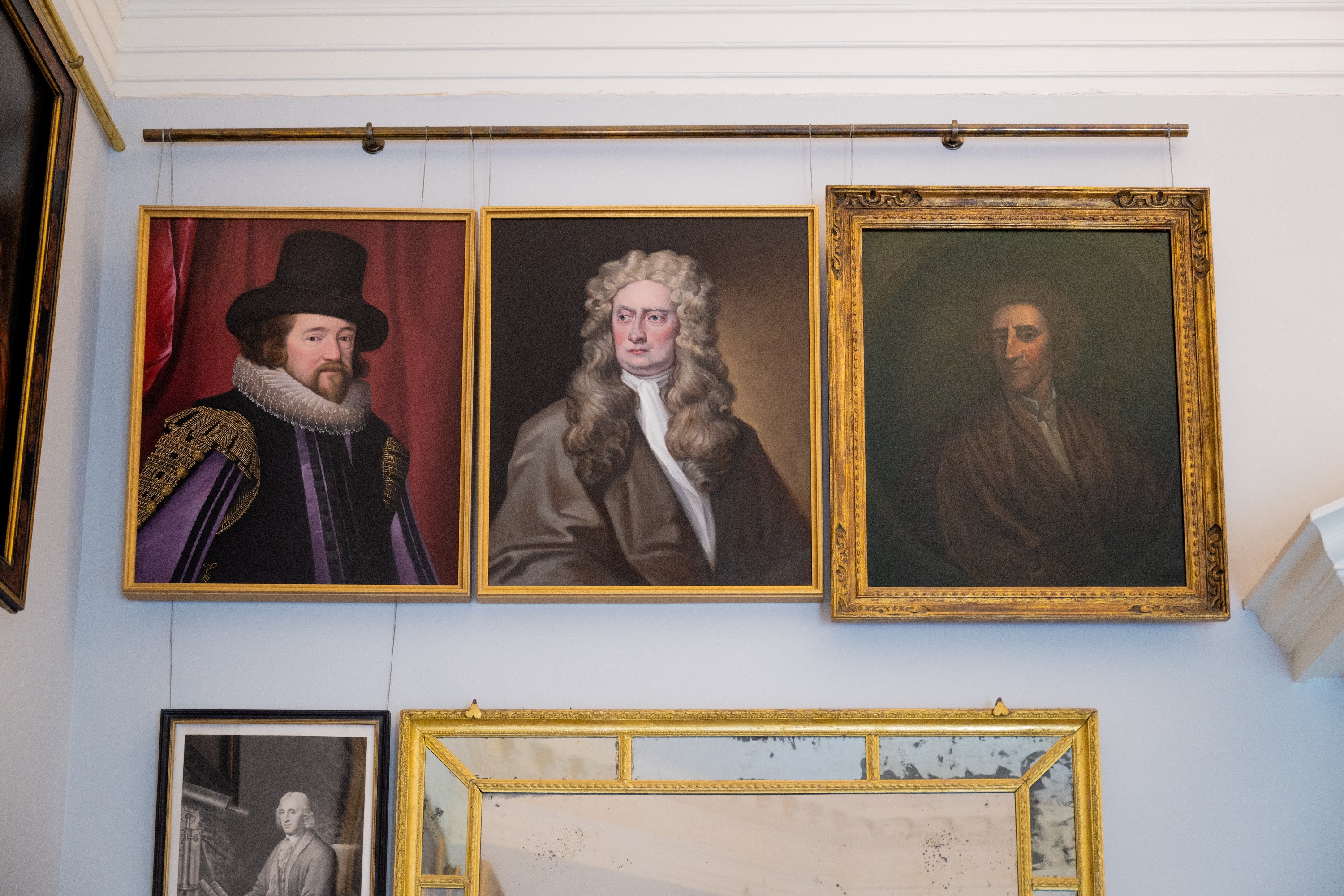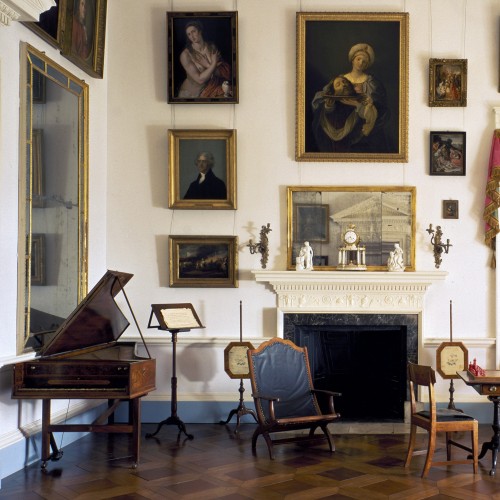
Family and friends gathered in this parlor for games, music, and conversation, and it was the site of weddings, dances, and other important social events. It held part of Jefferson's art collection, including portraits of many people whom he admired or considered noteworthy.
Audio Overview
Listen as Monticello Guide Justin Bates, provides an overview of the Parlor and activities that took place here.
- We know where most paintings hung in Jefferson’s time because he made a list of the works of art in Monticello’s public rooms.
- The large pier mirrors on either side of the entrance to this room have been here since Thomas Jefferson’s time and have never left the house.
- The device near the window with a glass bulb and a crank is called an “air pump” and was used to demonstrate the physics of a vacuum chamber. It was both curious and educational.
Keep Scrolling for More Information about this Room
Salome Bearing the Head of St. John the Baptist

Do you see a painting with a head on a platter? This work depicts Salome bearing the head of St. John the Baptist, and Jefferson bought this painting, a copy of an early 17th century Guido Reni painting, in France. Biblical paintings like these were fashionable at the time.
Jefferson remained private about his personal religious beliefs, and political opponents often speculated about his faith, or lack thereof. He said he was “a sect unto himself.” He wrote that he believed in God and thought Jesus was the world’s greatest moral teacher, but he also recorded that he was skeptical of miracles, the Trinity, and of the divinity of Christ.
Bacon, Newton, and Locke

Jefferson called these three men his “trinity of the three greatest men the world has ever produced.” Sir Francis Bacon on the left was a philosopher, a statesman, and is often called the father of the scientific method. In the center is Sir Isaac Newton, father of modern physics and one of the inventors of calculus. The painting of John Locke on the right is original to Monticello. Locke was a statesman and philosopher who believed that people were born with natural rights to life, liberty, and property.




